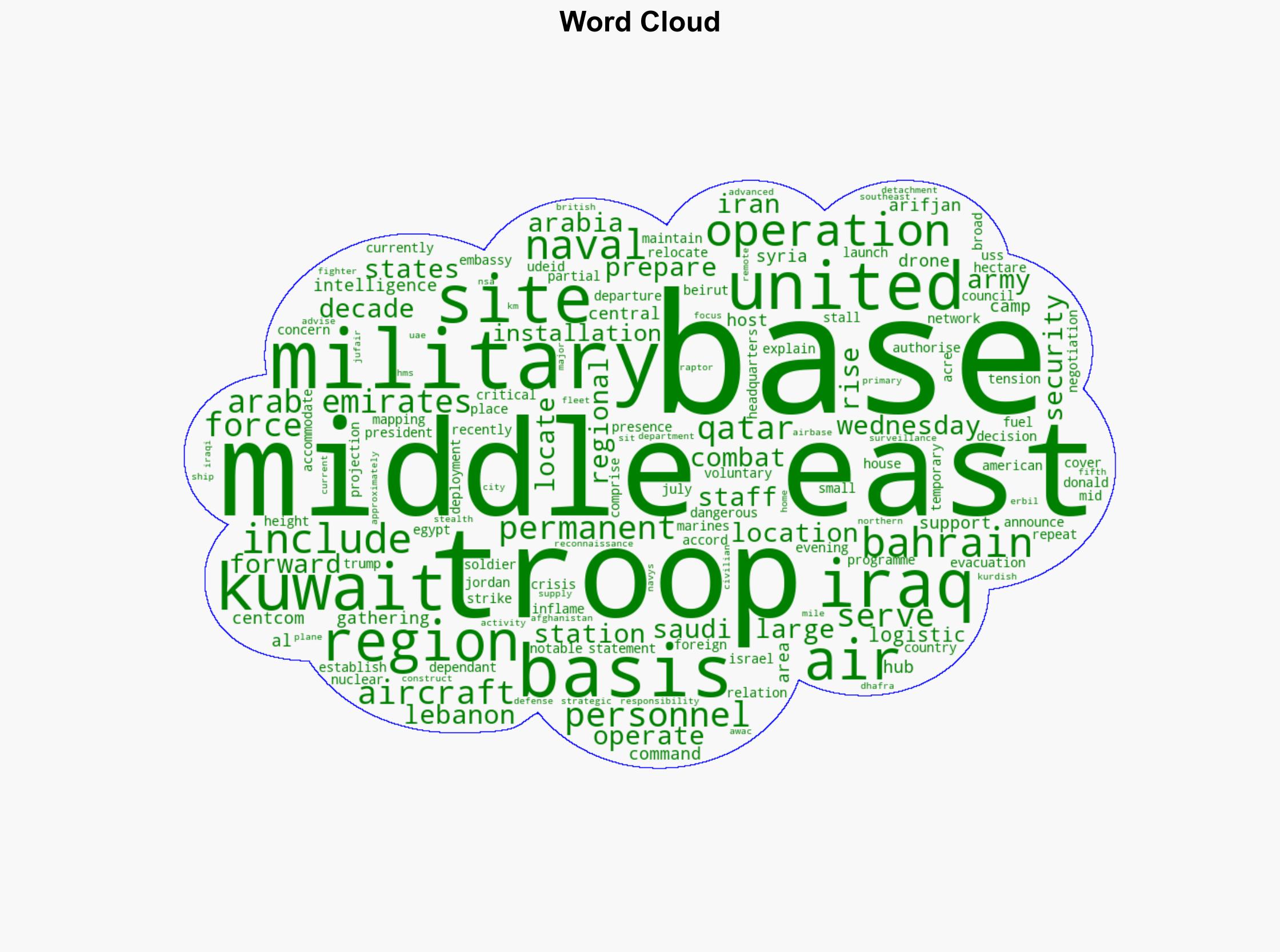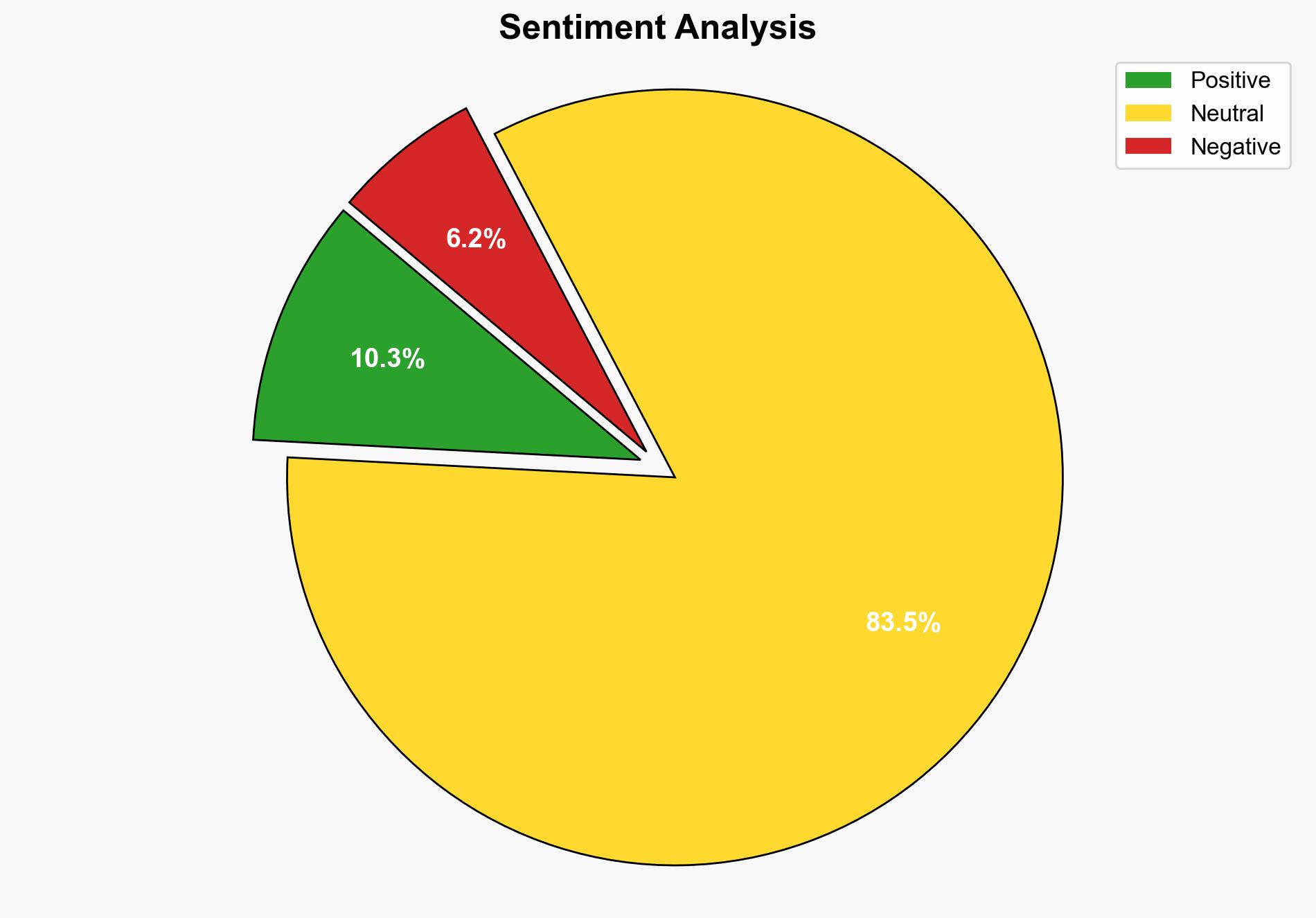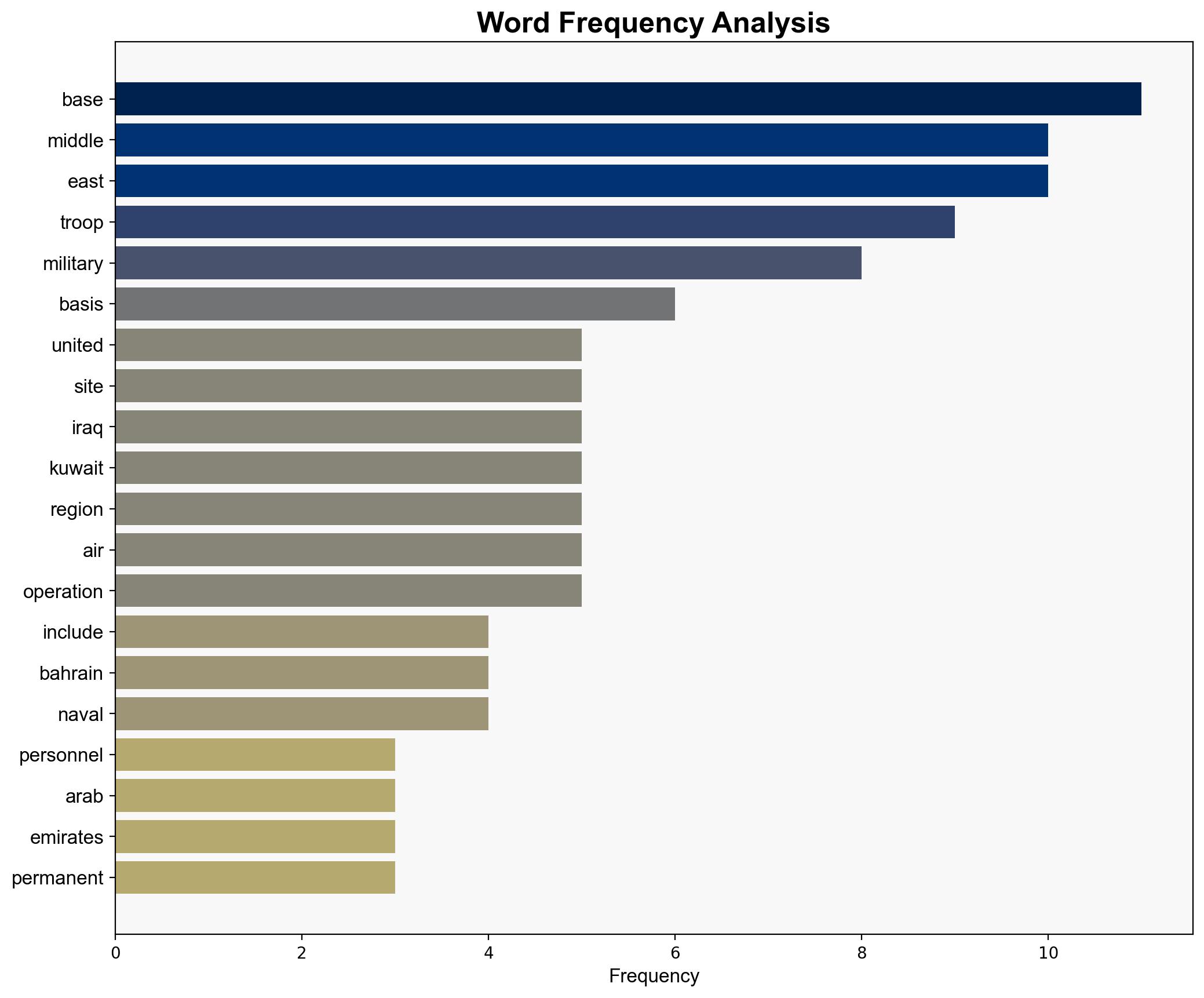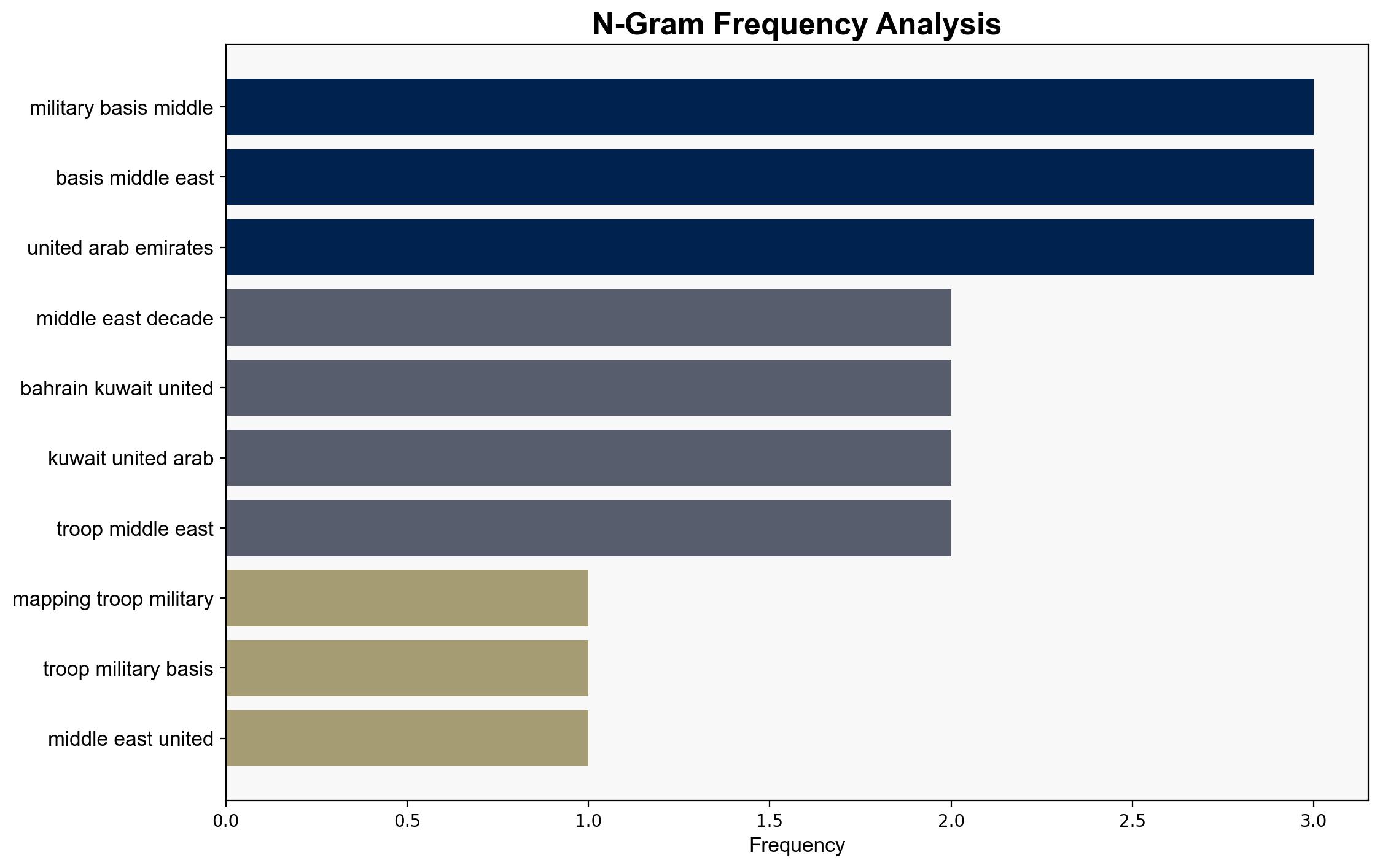Mapping US troops and military bases in the Middle East – Al Jazeera English
Published on: 2025-06-12
Intelligence Report: Mapping US Troops and Military Bases in the Middle East – Al Jazeera English
1. BLUF (Bottom Line Up Front)
The United States maintains a significant military presence in the Middle East, with bases strategically located in Bahrain, Kuwait, the United Arab Emirates, and other key nations. Recent developments, including the partial evacuation of the US embassy in Iraq, underscore rising regional tensions, particularly concerning Iran’s nuclear program and potential Israeli military actions. It is crucial to monitor these dynamics closely to anticipate shifts in regional stability and US foreign policy.
2. Detailed Analysis
The following structured analytic techniques have been applied to ensure methodological consistency:
Causal Layered Analysis (CLA)
Surface events include the US embassy evacuation and heightened tensions with Iran. Systemic structures involve the network of US military bases serving as logistical and operational hubs. Worldviews reflect US strategic interests in maintaining regional influence and security. Myths pertain to the enduring US commitment to Middle Eastern stability.
Cross-Impact Simulation
The US military presence influences regional alliances and conflicts, potentially affecting economic dependencies and diplomatic relations. Increased tensions with Iran could lead to broader regional instability, impacting global oil markets and security alliances.
Scenario Generation
Scenarios include a de-escalation of tensions through renewed diplomatic efforts, a status quo with continued military readiness, or an escalation leading to military conflict involving Iran and its allies.
Network Influence Mapping
Key actors include US military and diplomatic personnel, regional governments, and non-state entities. The influence of these actors is critical in shaping outcomes related to security and diplomatic engagements.
3. Implications and Strategic Risks
The primary risks include military escalation with Iran, potential disruptions to global oil supplies, and increased regional instability affecting US allies. Cyber threats and asymmetric warfare tactics may also pose significant challenges to US interests.
4. Recommendations and Outlook
- Enhance diplomatic efforts to de-escalate tensions with Iran and engage regional partners in dialogue.
- Strengthen cybersecurity measures to protect military and civilian infrastructure from potential attacks.
- Prepare contingency plans for various scenarios, including rapid military deployment and humanitarian assistance.
- Best Case: Successful diplomatic negotiations lead to reduced tensions and increased regional cooperation.
- Worst Case: Military conflict erupts, destabilizing the region and impacting global markets.
- Most Likely: Continued tensions with intermittent diplomatic engagements and military readiness.
5. Key Individuals and Entities
Donald Trump
6. Thematic Tags
national security threats, cybersecurity, counter-terrorism, regional focus




